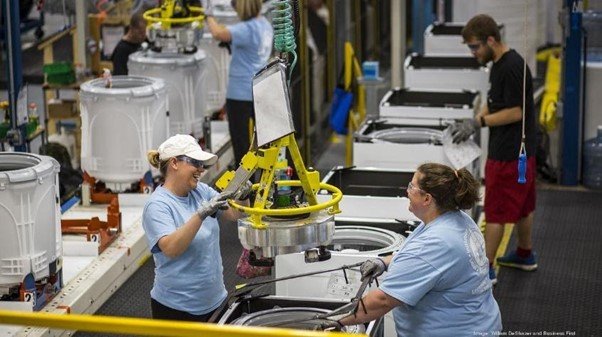
Operations Management
Industrial operations (also known as operations management) are essentially the area of manufacturing, design, products and controlling the production process/assembly line. It is an extremely labour-intensive task and employs a lot of staff.
Robotic Process AutomationRPA
RPA (Robotic Process Automation) is used for automation of mainly back-office tasks that are usually given to humans to do, such as data extraction, data filing and organisation as well as many other manual and computer-based tasks. In cases like manufacturing (i.e. On the production line), RPA can be used to do the same jobs that humans would normally do (assembly, cutting, sorting, transporting etc).
Benefits of RPA
As RPA allows businesses to automate very manual and monotonous tasks that consume a significant amount of human effort and time, manufacturers can free up their human workforce to work on other aspects that can better help the production, such as quality control or maintenance. This saves both valuable time and money for the business, leading to faster growth and higher efficiency.
Furthermore, RPA bots are extremely accurate, quicker, and much more consistent than humans, meaning there are significantly fewer error intervals, delays, and faults. Most importantly, RPA is capable of working 24/7 without any breaks whatsoever (apart from the maintenance downtimes). All of which can boost business processes and especially productivity. Having RPA can also save you costs in the long run, because having to pay £30,000 as a one-time purchase for a robot that is vastly better than humans, especially in manufacturing, is much cheaper than having to pay a human worker £20,000 every year. Furthermore, due to their high accuracy and consistency, they are much less likely to make defective finished products, meaning that fewer products must be thrown away and fewer raw materials need to be wasted.
Drawbacks of RPA
However, whilst RPA is incredibly beneficial to the production process and labour heavy tasks, such as in manufacturing, there can also be some drawbacks, both from a social and business standpoint. From a social standpoint, an ongoing (as well as a rather controversial) problem can most definitely be the reputation of RPA. Whilst some claims of RPA taking over jobs and such are true, they are only true to some extent. RPA is designed to also support/work alongside the employees, and once trained, employees can ‘work’ the bot. Due to the unfortunate image of robots themselves, however, future employees may often steer clear from the business due to redundancy fears, this is also a major reason as to why some businesses have not adopted RPA yet. They have worries that introducing RPA will cause job security fears and lead to an extremely low employee retention rate. Which considering from an assembly line perspective, may not be much of an impact seeing that robots can just be used throughout. But humans are still needed for monitoring, helping as well as doing some tasks that even the robot themselves cannot do.
Another downside, this time from a business perspective, is that it does require constant or occasional upkeep, and the initial costs will be rather high, especially so if it is a start-up business this is because you will need specially trained individuals with a specific skill set to come help set it up and maintain (just like how you’d call a plumber to fix your toilet). However, it is an investment and will most likely be extremely beneficial for you in the future.